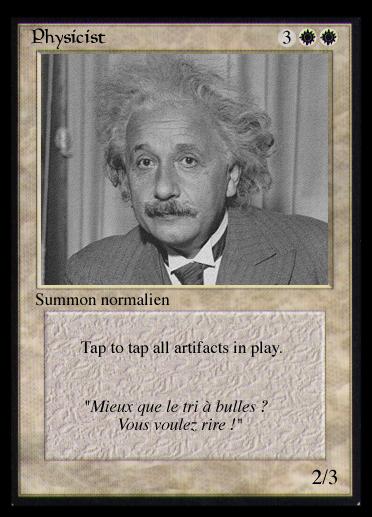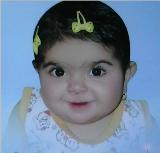محمدعلی مقامی ( سه شنبه 88/6/10 :: ساعت 2:1 صبح)
Mouth cancer: The self-examination everybody should be doing
Expatica,Germany
Mon,31 August 2009
While mouth cancer is the sixth most common malignancy reported worldwide, few people know about its risks and warning signs.
Regular self-examination is now the norm for breast cancer and testicular cancer, but how often do you examine your mouth for signs of oral cancer? And if you did, would you know what to look for
Mouth cancer is the sixth most common malignancy reported worldwide – and one with a high mortality rate.
In most countries, the ailment is more common in men than women. However, in Germany, the UK and France, this statistical trend is reversing, with more women being diagnosed every year.
Smoking, drinking alcohol and chewing tobacco, areca or betel nut is associated with 70 to 80% of mouth cancer cases.
In the UK, one person dies every three hours and statistics are comparatively high throughout the rest of Europe. These numbers amount to more cases per year than cervical cancer and testicular cancer combined. Yet, many of us don’t know what mouth cancer looks like and its presence, often painless, frequently goes unnoticed.
A survey that the BDHF carried out in 2007 showed that 25% of people don’t recognize mouth cancer as a disease that can kill them,” said Nigel Carter, chief executive of the British Dental Health Foundation (BDHF). “Unfortunately most people only realize they have a problem when they have had mouth cancer for a while. A vital message that the BDHF wants to get across is that people need to take action. They need to know what to look for and have regular check-ups.”
Mouth cancer can develop in any part of the mouth including the tongue, gums, tonsils, lining of the mouth, lips and upper part of the throat. The most common symptom is a mouth sore or a persistent white or red patch on the gums, tongue, tonsil or lining of the mouth that does not heal within three weeks.
Smoking as a major cause
Although there no apparent lifestyle triggers in 25% of cases, over 70% are associated with smoking, drinking alcohol, over exposure to the sun and chewing tobacco, areca or betel nut. While the death rate has halved for men over 70, it has steadily increased for younger men and women in their 30s, 40s and 50s. And experts warn that some strains of the
human papillomavirus (HPV), which is usually implicated with cervical cancer, has contributed to the rise in younger people
“If you don"t know the sexual history of your partner then it is always advisable to wear protection,” said Carter. “In the last ten years there has been more than a 30% rise in cases in people under 45. This is largely due to young people becoming more sexually active. If you have had more than five oral-sex partners in your lifetime, you are two-and-a-half times more likely to develop oral cancer.”
However, smoking still remains the major cause of many cancers. Research has shown that smoke and heat from cigarettes, cigars, and pipes irritate the soft fleshy parts of the mouth, causing damage and inflammation.
Chewing tobacco and betel nut can cause ulcers and sores because of the direct contact with the gums and inside of the cheeks. These ulcers and sores can lead to cancer.
“The risk is 3 times higher in smokers than non-smokers and if you smoke and drink alcohol the risk is even greater,” said Saman Warnakulasuriya, Professor of Oral Medicine and Experimental Oral Pathology, Dental Institute, King’s College, London, and Director of the WHO Centre for Oral Cancer and Precancer in the United Kingdom. “Stopping smoking has been shown to reduce the life risk of developing mouth cancer and other diseases. However, the other serious concern is that smokeless tobacco is promoted as harmless.”
This is wrong, said Warnakulasuriya: “Smokeless and snuff is known to cause cancers of the mouth and pancreas.”
Warnakulasuriya also warns that to avoid mouth cancer in younger people, children should be prevented from smoking, protected against smoke and discouraged from using smokeless tobacco.
Personal experience
Mouth cancer frequently goes unnoticed as Irish author Lia Mills, who was diagnosed in 2006, recalls.
“Everyone knows that if you have a lump or a sore in any part of your body you should go and get it checked out,” she said. “It never occurred to me that the sore that had developed in my lower right jaw was cancer. I didn’t know that you could get mouth cancer. My dentist thought it was due to cheek-chewing but when the whitish patches on the inside of my cheek didn’t clear up and started to become painful, I went to my GP
By the time Lia had gone to see her GP the patch in her mouth was painful and she had developed a lump in her neck. She was diagnosed with squamous cell carcinoma and needed radical surgery, which included removal of her lower jaw, part of her cheek and removal of the lymph nodes in her neck, followed by extensive radiotherapy.
“Any persistent lump or thickening in the cheek or trouble chewing or swallowing should be checked out without delay,” warned Lia, who has written a book about her experience.
Both Warnakulasuriya and Carter advise that mouth cancer is preventable if the key risk factors of smoking and alcohol consumption are avoided
“Regular dental examinations and early screening are vital for early diagnosis and survival,” said Carter. “Also a diet with plenty of vegetables rich in vitamin A, C and E offers protection against the development of many types of cancer including mouth cancer.”
How to do a self-examination of your mouth:
• Check your face and neck in the mirror. Look for any lumps, bumps or swellings that are only one side.
• Feel and press along the sides and front of your neck for any lumps or tender areas.
• Pull down your lower lip and look inside for any sores or change in colour. Use your thumb and forefinger to feel the lip for lumps, bumps or changes of texture.
• Pull out your cheek so that you can see inside. Look for red, white or dark patches.
• Then put your finger on the inside of your cheek and your thumb on the outside and check for any lumps or tenderness. Do the same on the other side.
• Tilt back your head and open your mouth so that you can see the roof of your mouth. Check for any lumps or colour changes.
• Stick your tongue out and look at the surface. Gently pull your tongue out and
look at one side then the other. Check for any surface changes or colour changes.
Look underneath the tongue by placing the tip of the tongue against the roof of the mouth and look for ulcers or white or red patches.
• Gently press along the floor of the mouth for any swelling or lumps.
If you find anything out of the ordinary, particularly a sore or patch that doesn’t heal within three weeks consult your dentist or doctor.
The risk factors:
-Smoking
-Chew tobacco products
-Excessive drinking
-Exposure to sunlight
-Habits of lip or cheek biting
-Ill-fitting dentures
Warning signs:
-Any ulcers or sore that do not heal within three weeks
-Swelling, lumps or bumps on the lips, gums or other areas inside the mouth
-White, red or dark patches in the mouth
-Repeated bleeding in the mouth
-Any numbness, loss of feeling or pain of the face, mouth or neck
Frances Geiger Pelles/Expatica










